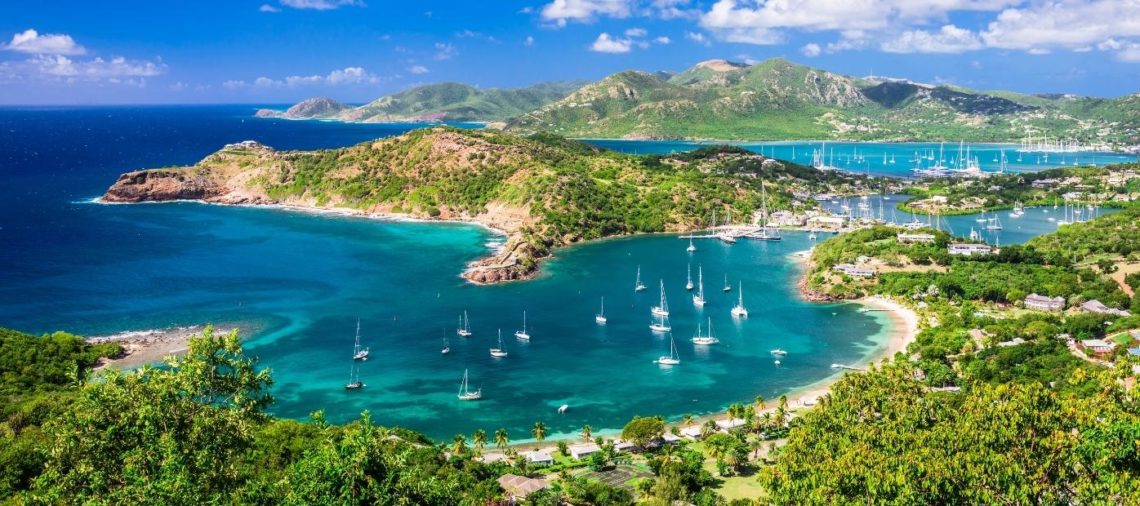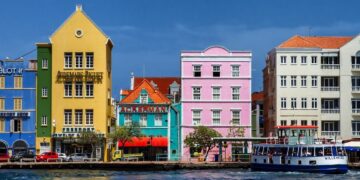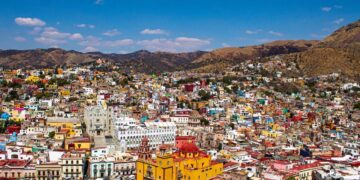When you hear of Antigua & Barbuda, you probably think of a mysterious land, somewhere in the middle of a stretch of blue water that you can’t quite pinpoint. Antigua & Barbuda is a country in the Caribbean Sea that includes two main islands (here comes its name), plus 35 other small islands. Its nearest neighbors are Anguilla (to the north), Guadeloupe and Dominica (to the south), Montserrat (to the south-west), and St Kitts and Nevis (to the west) – but I’m only writing this for geography buffs or those planning to settle there, not that it really matters.
Antigua, the island of parishes
After the planes had whizzed over my head in St. Martin, I was keen to explore a Caribbean island a little more deeply. So as soon as Zenith cruise vessel docked at 7 am in the harbor of capital St. John’s (or San Juan), I was burning to get on the minibus that was to tour the island in what’s called “Historic Antigua… with beach relaxation“. A route that “sliced” Antigua from north to south, passing through some picturesque villages, with stops at English Harbour and Nelson’s Dockyard, a photo stop at Shirley Height’s and, finally, an hour of relaxation on one of the island’s most beautiful beaches – Fort James Beach.
Do you wanna party in Antigua? Check this Guide to the Caribbean’s Best Party: Shirley Heights Antigua
Antigua, discovered by Columbus
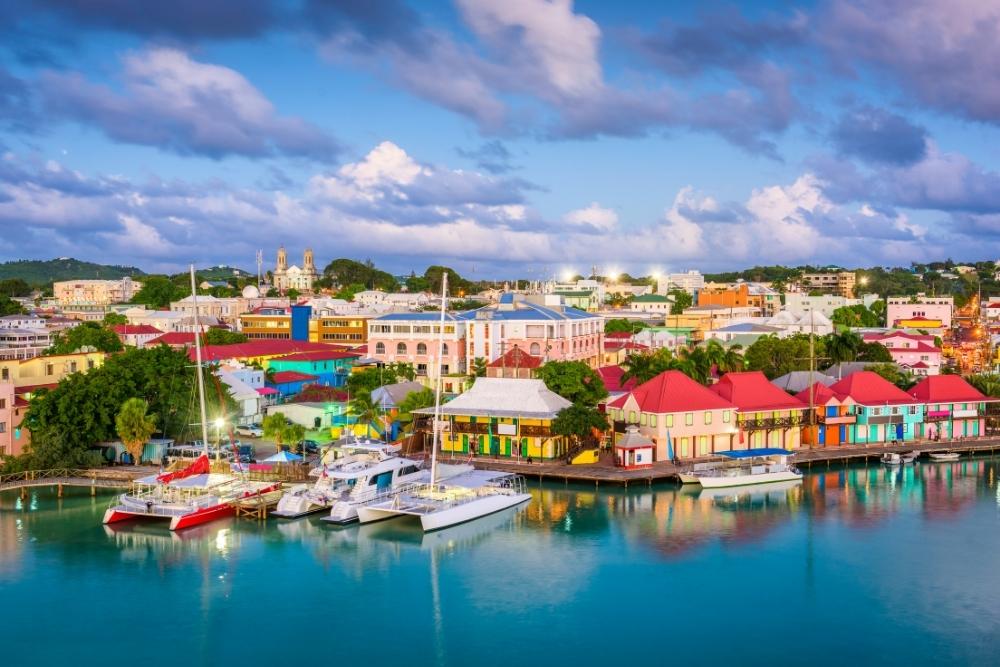
First, two things I learned about Antigua. The first is written on car license plates, which clearly say “Antigua & Barbuda. Land of sea and sun“. Land of sea and sun. Which, by the way, is instantly apparent just by looking at the flag of this tiny Caribbean nation. Then there’s the island’s 365 beaches, one for every day of the year. You wouldn’t be bored if you lived in Antigua, if only by going to a beach every day. Because beyond anything else, this is about the beach.
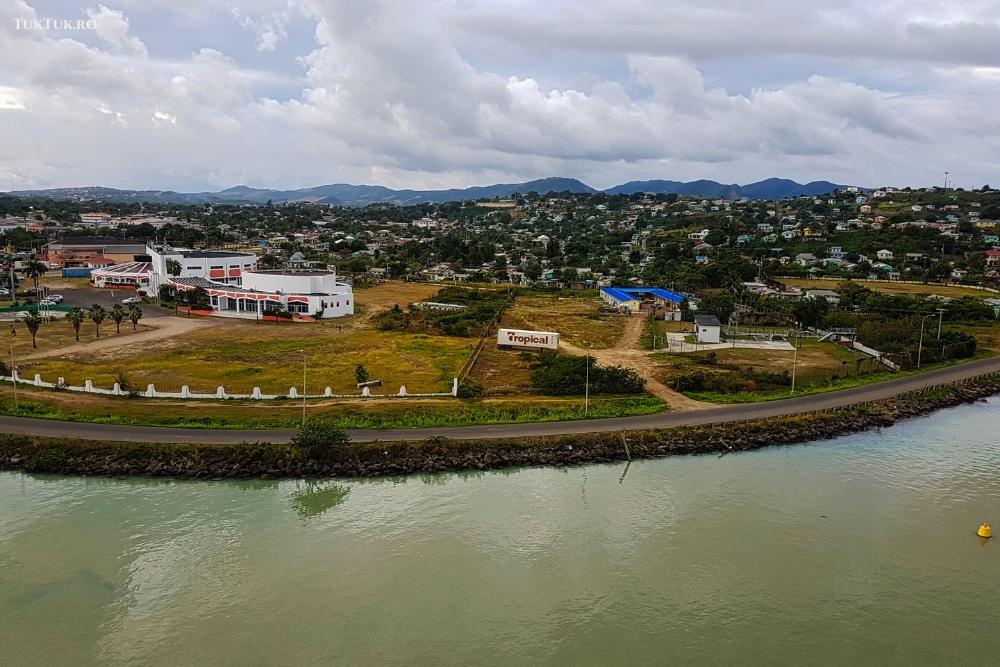
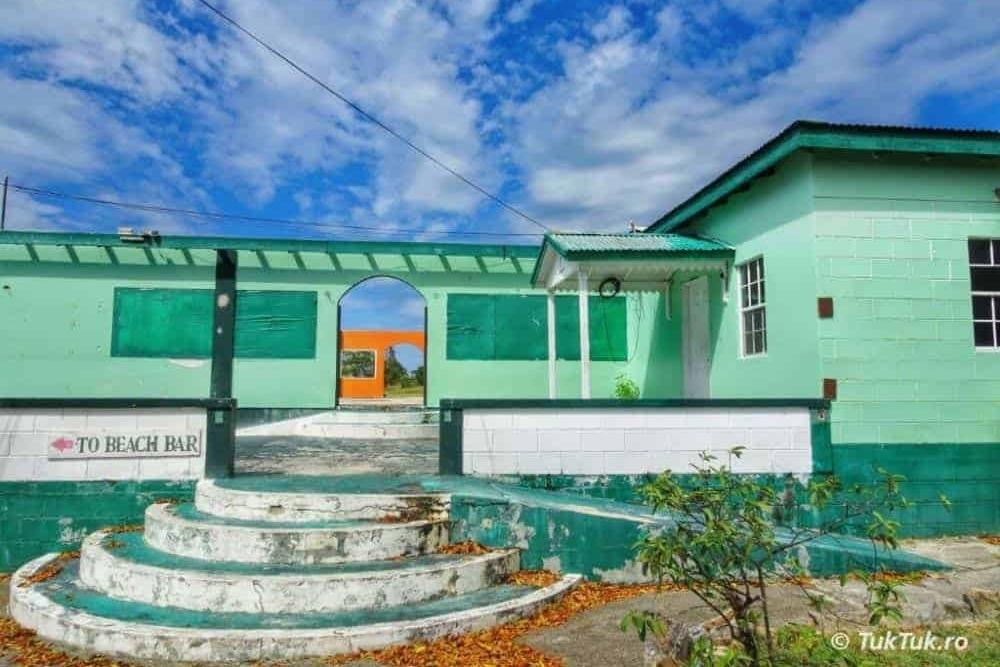
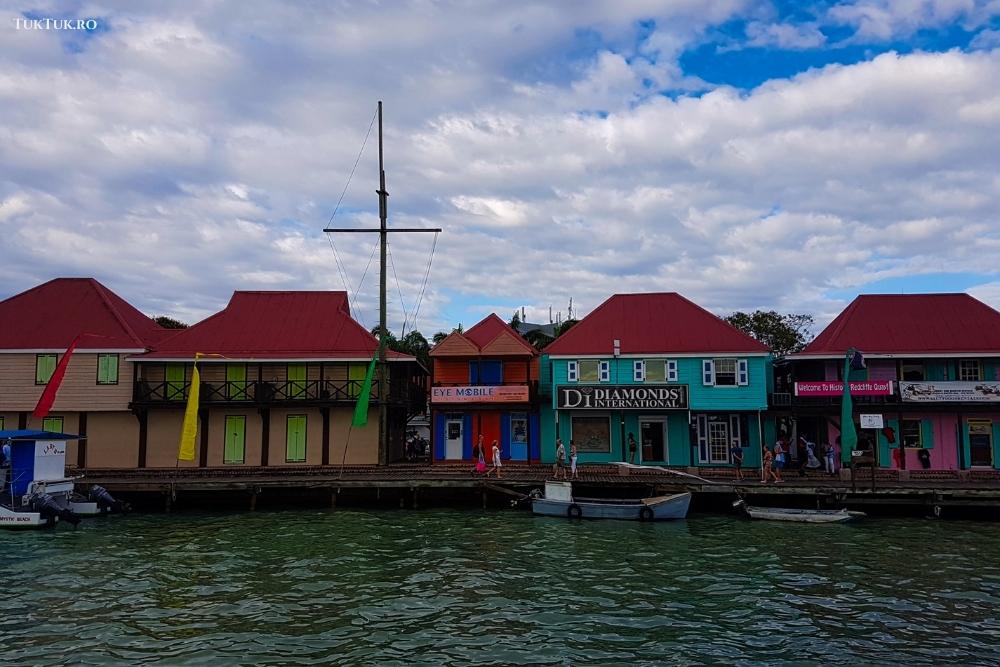
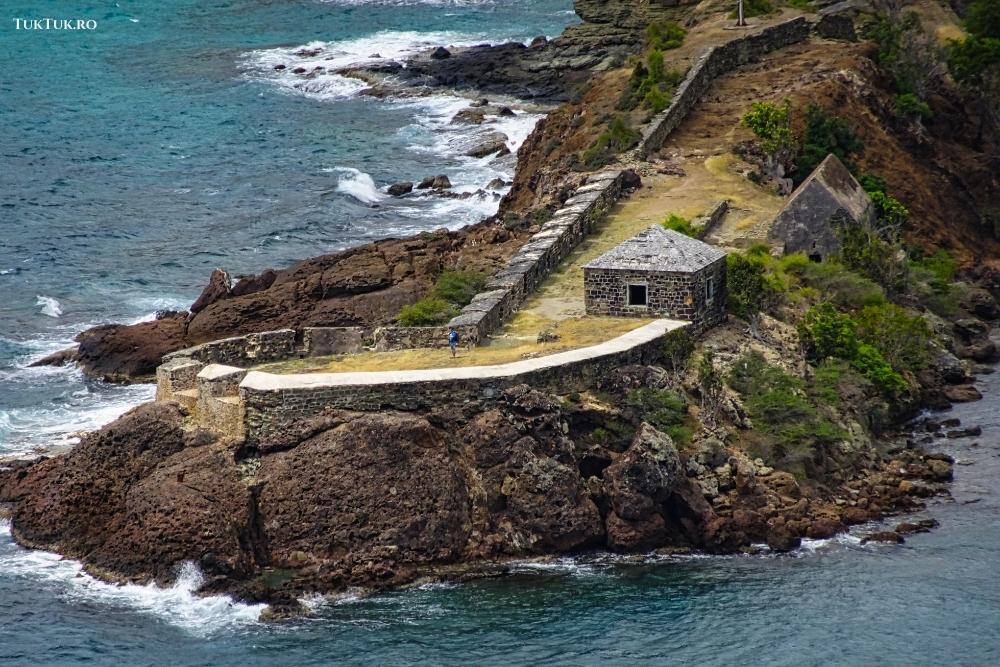
Antigua was discovered by the same Christopher Columbus in 1493, the Italian navigator also giving it its name, in honor of the Virgin of La Antigua, located in the Cathedral of Seville. ‘Antigua’ means ‘ancient’ in Spanish, and ‘Barbuda’ comes from ‘bearded’. But the Spanish did not colonize Antigua, mainly because of the lack of freshwater (there is no river) but also because the natives here were much more aggressive than those on other Caribbean islands.
The English did it in 1632 and instituted slavery, which they also abolished in 1834. Apart from a brief interlude in 1666, when the French ruled the island, the English were in power until 1981, when Antigua & Barbuda became an independent part of the Commonwealth, thus recognizing Queen Elizabeth II as the islands’ first queen.
The saints of Antigua
After so many centuries of British ‘rule’, it’s no wonder that Antigua drives on the left. Also, the population of around 92,000 relates quite a lot to British values (for example, the national sport is cricket). A population that seems, at first glance, extremely religious: the country is divided into parishes, and each is named after a saint (George, John, Mary, Paul, Peter, and Philip). Churches and cathedrals dot the island – you’ll see them in every village you pass as you travel across Antigua from one end to the other. The roads are pretty bad; it’s clear that the island is not an example of affluence. The terrain is pleasant, even if there are no mountains – the island’s highest point is Mount Obama (402m), renamed on 4 August 2009 in honor (and birthday) of the former US president (it was previously called Boggy Peak). People are quiet, and, as on any Caribbean island, time seems to pass at a different pace, slow and leisurely.
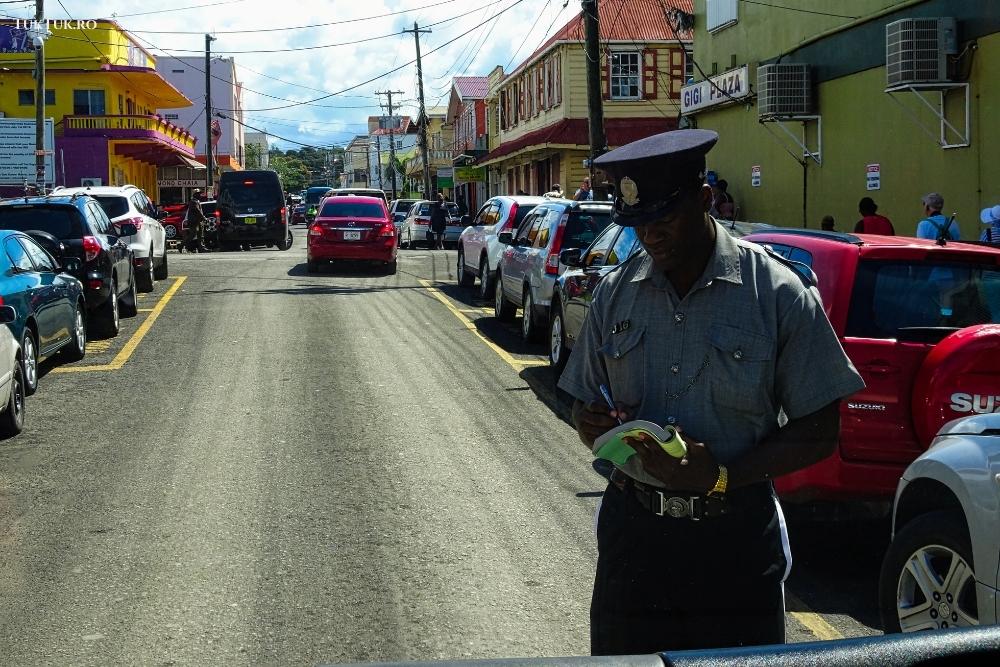
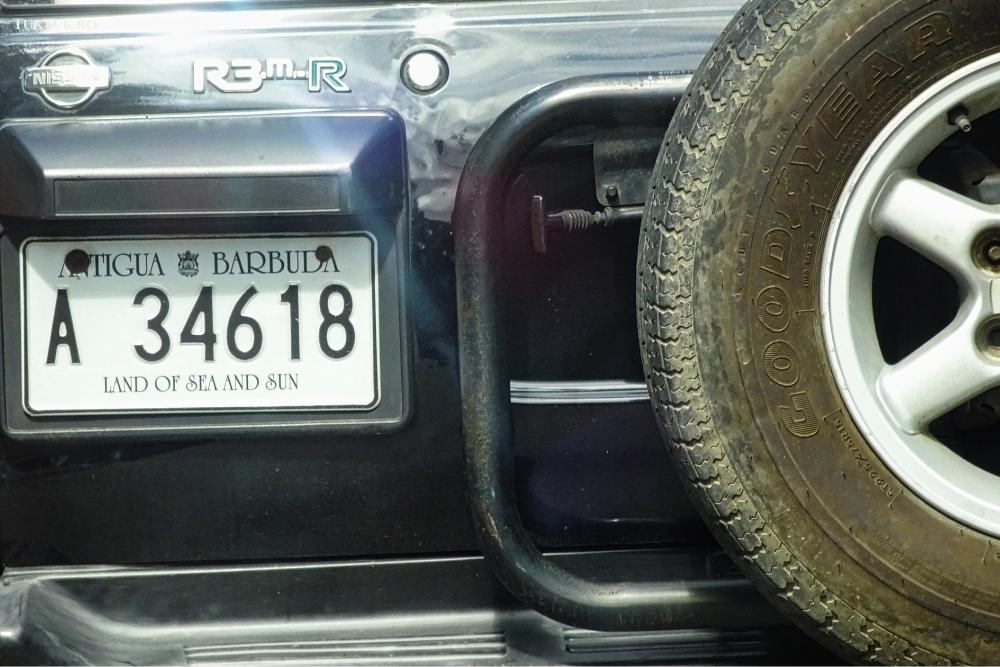
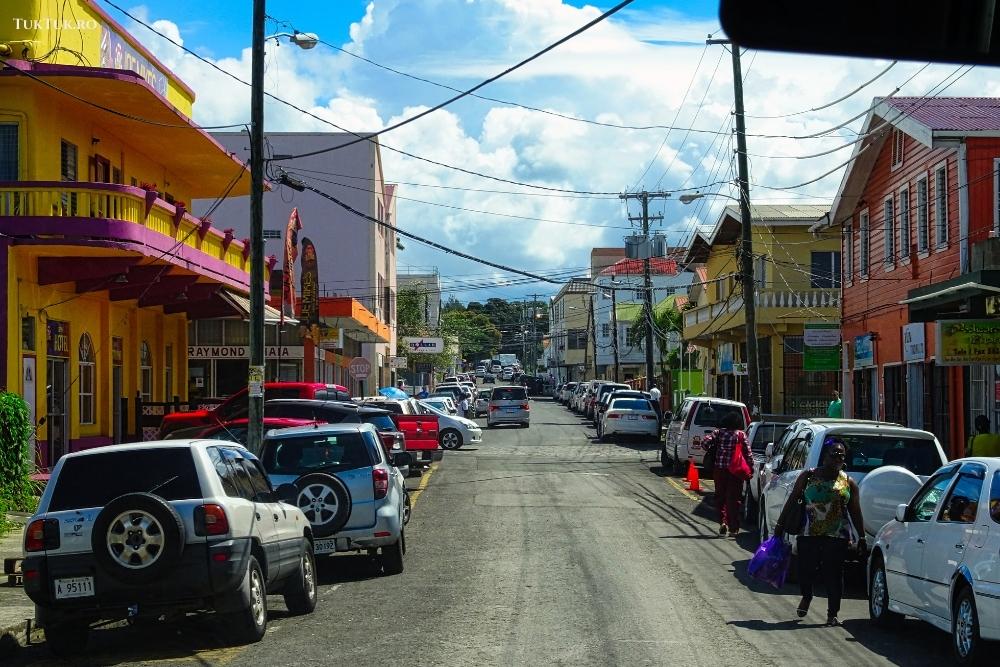
English Harbour and Nelson’s Dockyard
So, leaving northern St. John’s, after the cute minibus driver got a stupid ticket right in the harbor for not wearing a seatbelt (“Nobody wears seatbelts, look! He’s found me now, even though he doesn’t know me and has never seen me in his life!“), I finally arrived in southern English Harbour – Known for being the center of the Antiguan Yachting community, the main town in the south of the island. The yacht harbor harks back to the island’s colonial past and encompasses several points of interest, including Shirley Heights Lookout (the old lookout post, which offers a beautiful view of the harbor) and especially Nelson’s Dockyard, the excellently landscaped dock.
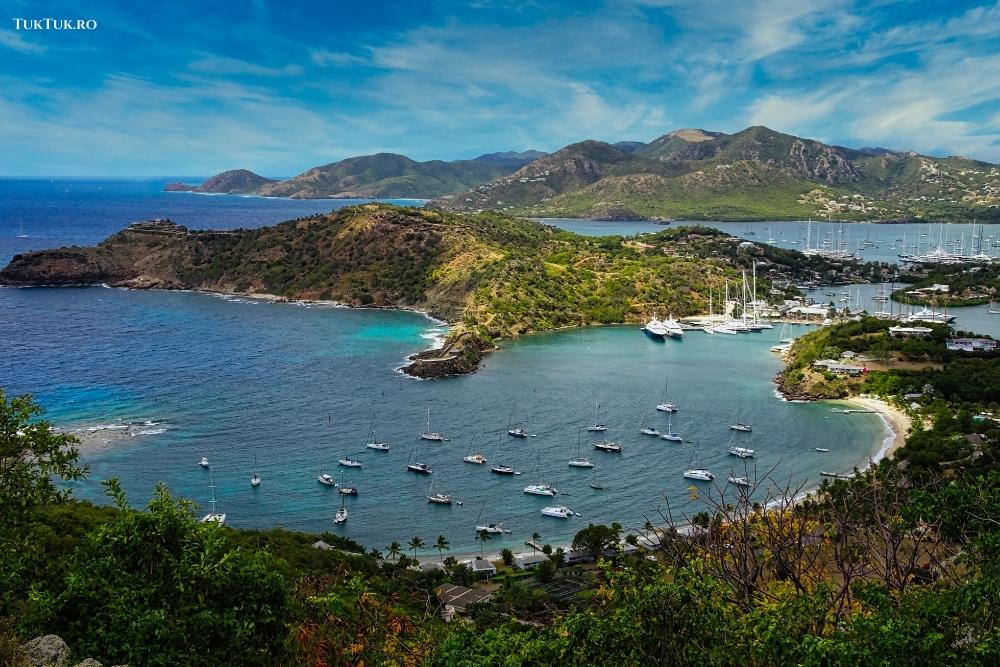
In Antigua, Sunday nights bring an old tradition: heading to Shirley Heights to watch the sunset over the ocean, eating barbecued food, and drinking rum while listening to a steel band. If you aren’t here on a Sunday, like me, you should still visit the old military post on the hilltop for some of the best views on the island. These include English Harbour, Nelson Dockyard, and neighboring Montserrat. Another idea for coming to Shirley Heights is to serve some good barbecued lobster. Of course, if you have time to spend, which I didn’t.
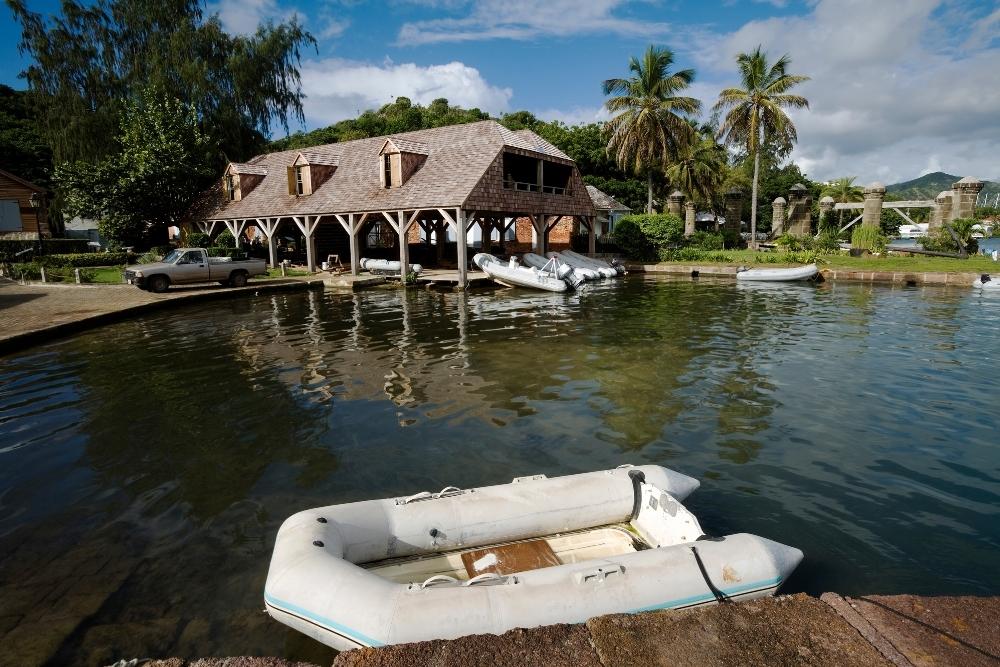
Nelson’s Dockyard, which has been inscribed on UNESCO’s World Heritage List since 2016, is the place where several restored buildings stand in memory of Admiral Nelson and the Royal Navy. Many Caribbean battles were fought in the 18th and 19th centuries, now transformed into an area bustling with restaurants, various shops, and home to the annual Antigua Sailing Week Regatta. It’s not hard to imagine that everything from outdoor concerts to traditional barbecues happens here on weekends.
Actually, visitors can enjoy exploring and engaging in many activities at Nelson’s Dockyard. The Dockyard Museum is housed in the former Admiral’s House, presenting exhibits relating to the history of the Dockyard and current archaeological research on the island. Copper and Lumber Store Hotel offers five-star accommodations, and it’s a spectacular venue for special events. There are also gift shops, art galleries, and restaurants located in the Dockyard, which show how the park preserves the area’s cultural heritage while meeting any modern need.
While nautical vessels are now replaced by private yachts in English Harbour, the port remains a favorite of those making the long Atlantic crossing.
Best beaches of Antigua
I left behind the small harbor bathed in a light, drizzling but short-lived rain and made my way back north to quickly reach the last stop in Antigua: Fort James beach, five minutes from the capital of St. John’s. A popular beach with locals and tourists alike (especially those arriving in Antigua by cruise ship), where fine white sand meets clear, turquoise-green water and coconut hawkers are eager to “chop” you one to enjoy, possibly with a little rum. The sun was up, and the hour reserved for the beach passed all too quickly. Luckily, a new destination was on the horizon.
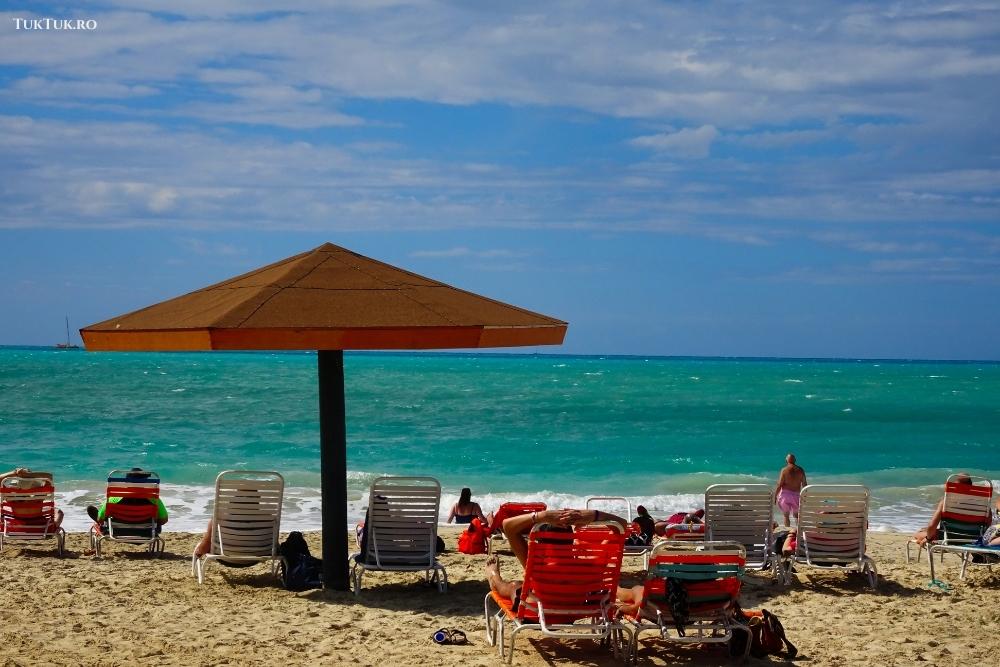
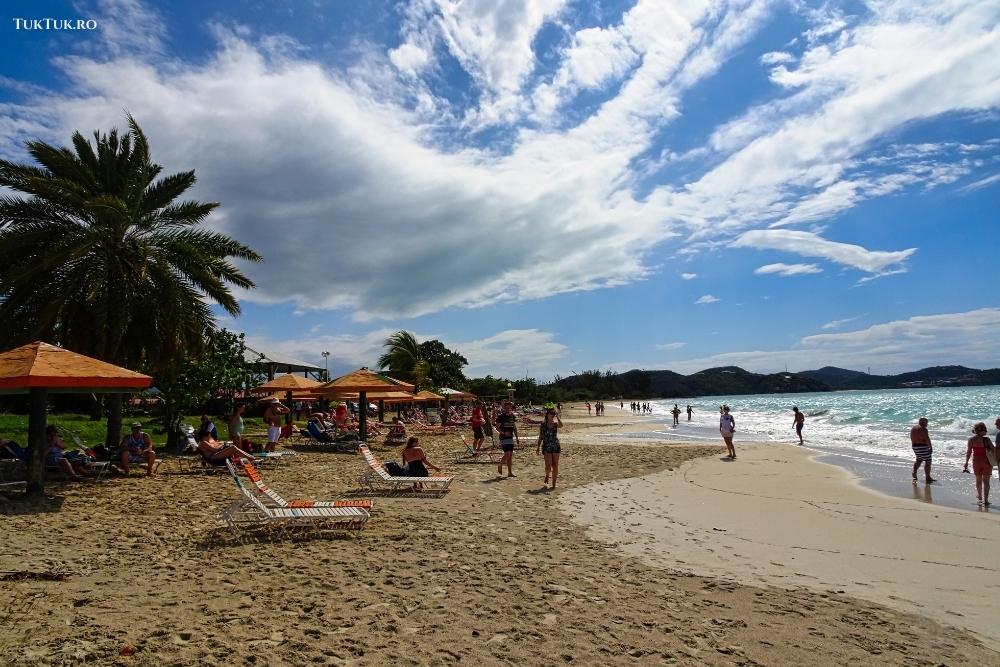
Anyway, before leaving, it is good to know a little more about Antigua beaches. Of course, I cannot list all the 365 beaches of Antigua (I don’t even know if this number is correct or this is only a legend). But I found out that some of the best beaches in Antigua are:
Dickenson Bay
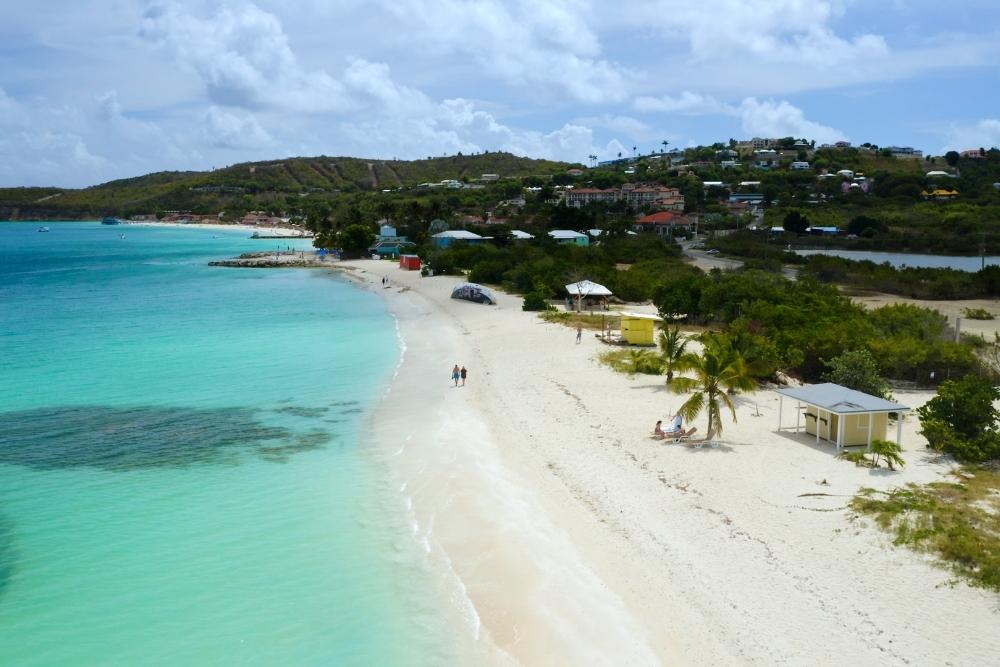
Antigua’s most beautiful beach consists of a mile of powdery white sand sloping gently into calm, clear waters protected by a coral reef. There’s nothing like the Caribbean beaches you’ve always dreamed of – white sand, cooling trade winds, and palm trees. All-inclusive Luxury Hotel Sandals Grande Antigua manages to enhance that dream, with six swimming pools, unlimited land, and sea sports, and a prime beachfront location. With the most romantic setting in the Caribbean, it’s no wonder World Travel Awards voted Sandals Grande Antigua Caribbean’s Most Romantic Resort.
Half Moon Bay
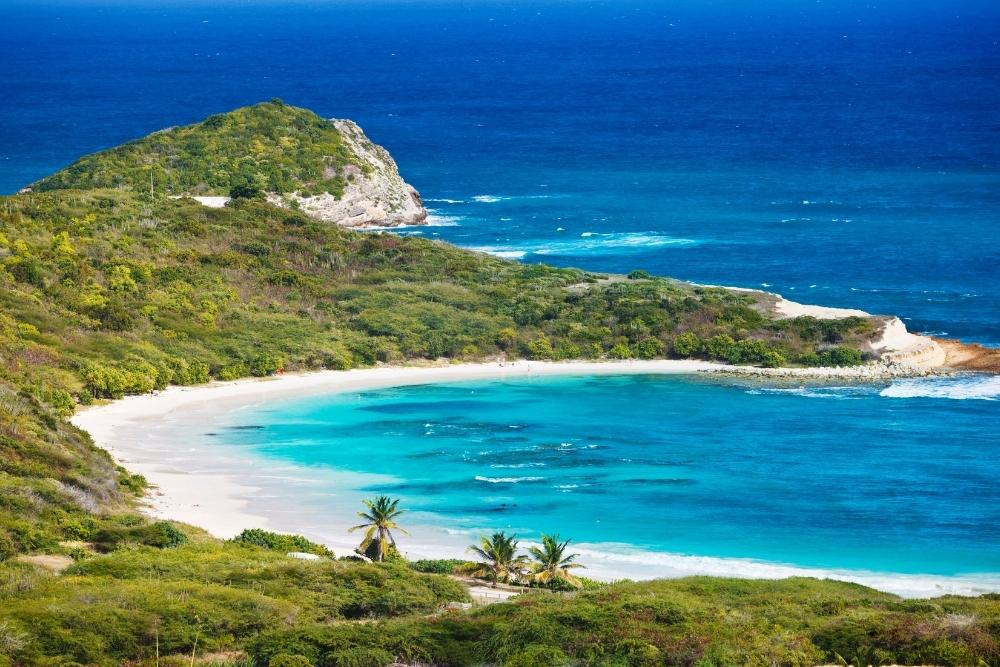
Half Moon Bay is far from everything, so you’ll have to put in a bit of effort if you want to visit one of Antigua’s most breathtaking beaches. The effort is worth it, as windsurfers will appreciate the large waves near the beach’s center while snorkelers can enjoy the calm waters near the edges. You can enjoy the vast seascape in Half Moon Bay while lying on the soft white sand. But, take care – the beach has an off the beaten path location!
Galley Bay Beach
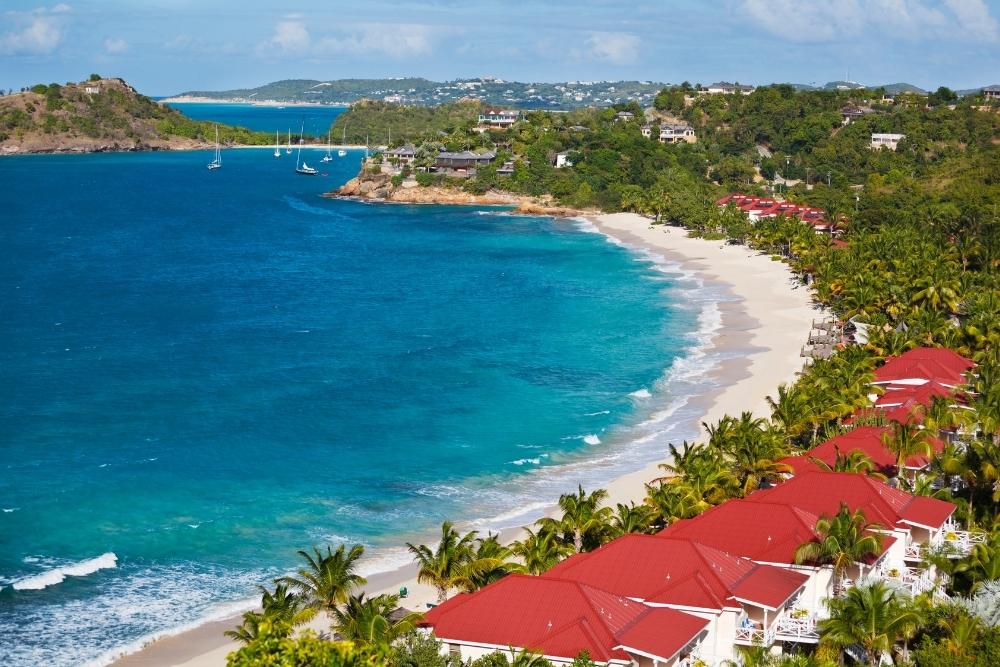
Antigua’s northwest coast, Galley Bay Beach, has some of the island’s best-surfing waves, and there are also plenty of animals to observe there. Many sea turtles come to nest here to lay their eggs (most commonly in summer but sometimes other times of the year as well). If you’re coming by night, you might see how the baby turtles are hatching. And, of course, if you come during the day, you can get a glimpse of Galley’s underwater life by snorkeling.
Hawksbill Beaches
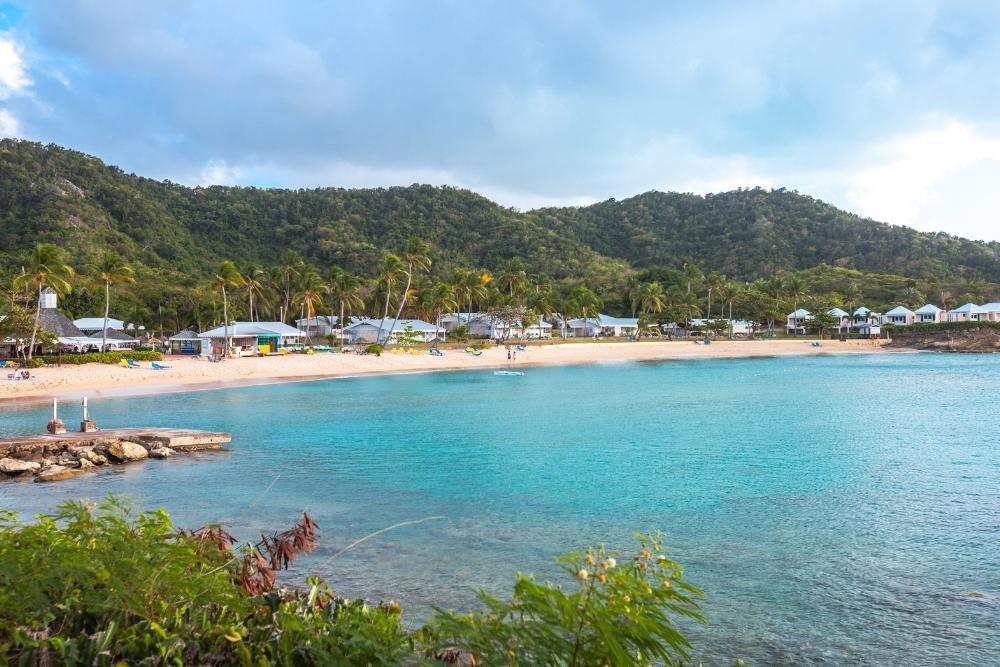
Despite being technically a part of Hawksbill by Rex Resorts, an adults-only resort, the four secluded Hawksbill beaches – Royal Palm Beach, Sea Grape Beach, Honeymoon Cove and Eden Beach – are open to all tourists (by the way, beaches in Antigua are free for everybody). When it comes to peace and quiet, Hawksbill is better than Dickenson Bay or Half Moon Bay with its calmer waves.
Pigeon Beach
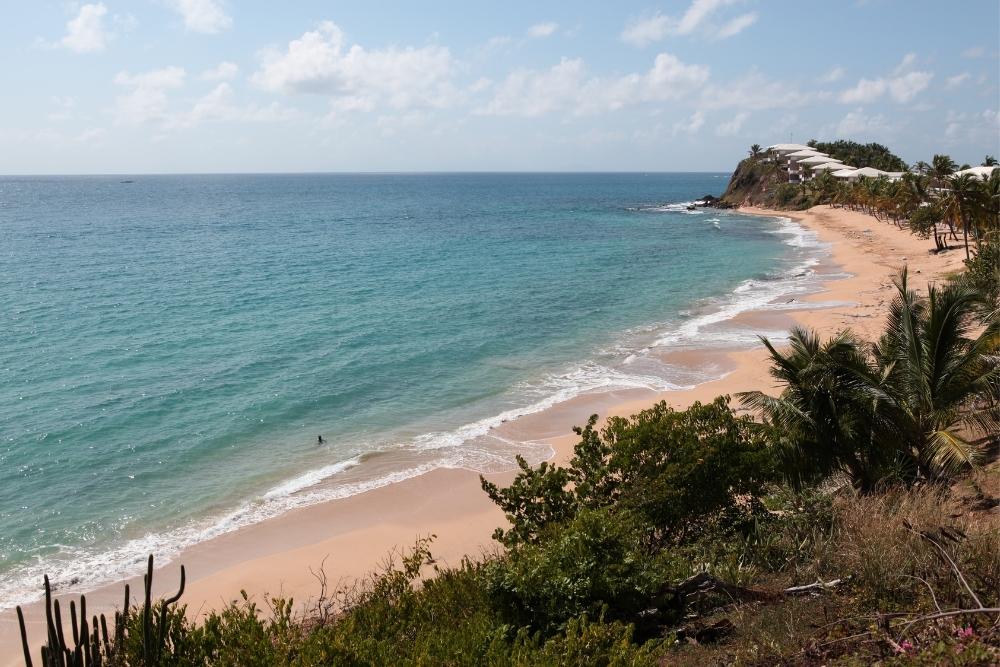
In addition to being the most popular public beach along this stretch of coast, Pigeon Beach is also an ideal place to take small children because of the shallow, protected waters. And there are a few nice cafe restaurants on the pretty, white beach, one of which serves breakfast.
I left Antigua with the feeling that I still had a lot to see and with the regret that I didn’t visit its sister, Barbuda, which we learned is wilder and perhaps even more beautiful. But Zenith was waiting and, believe me, you wouldn’t want to miss the departure of the big ship. So… bye-bye Antigua, hope to see you again!
You may also like: Altos de Chavon, the medieval village created by a visionary millionaire in the Dominican Republic

